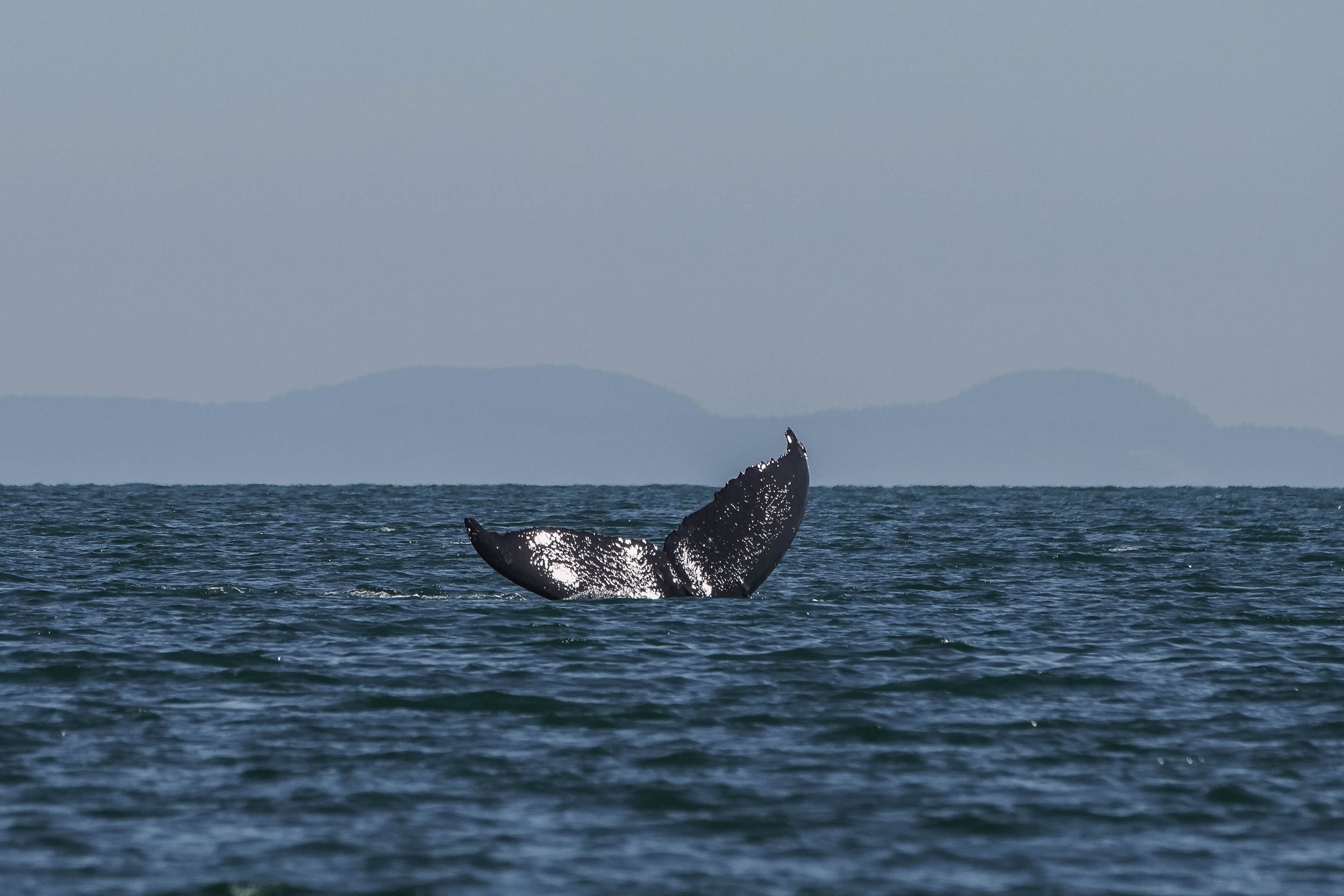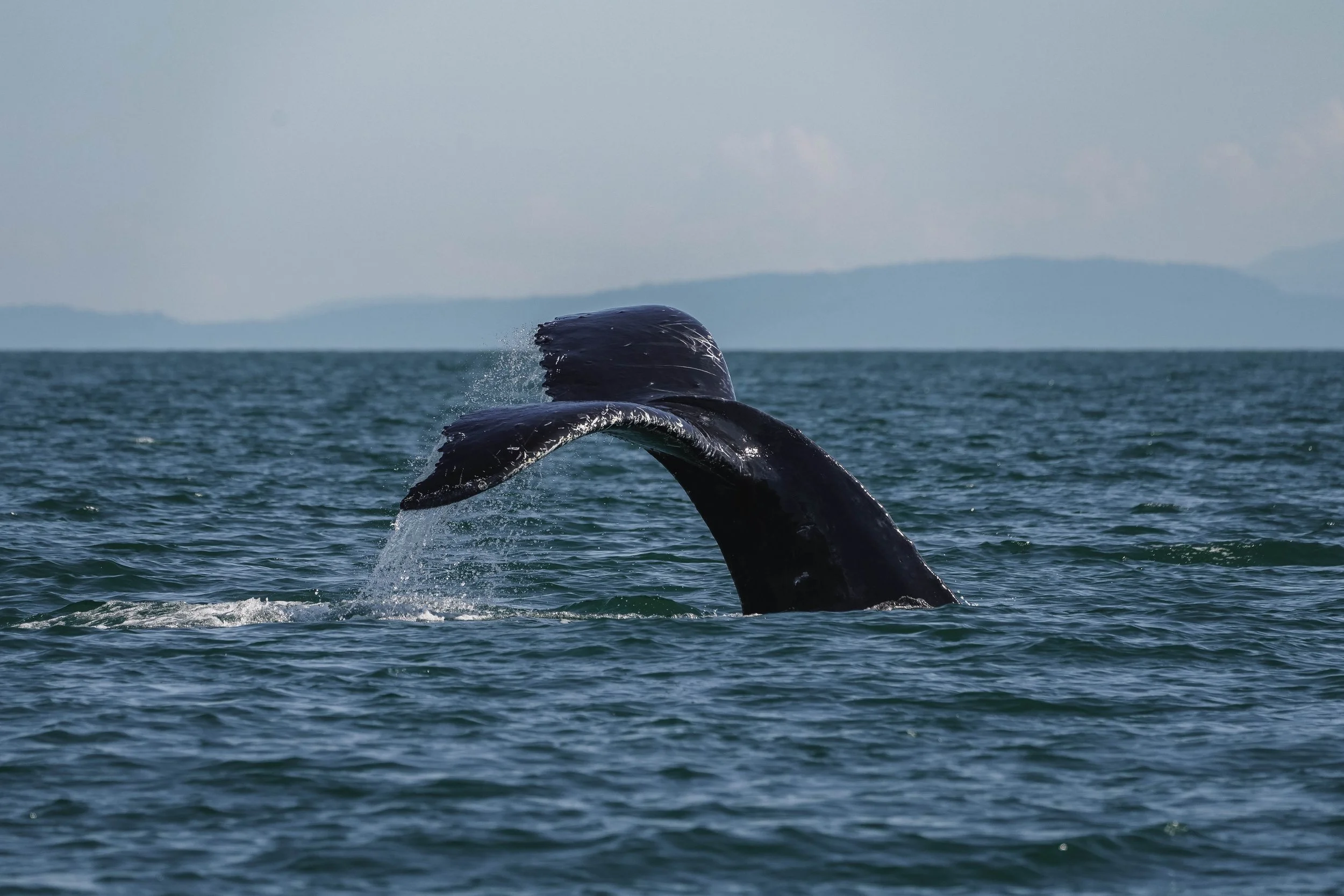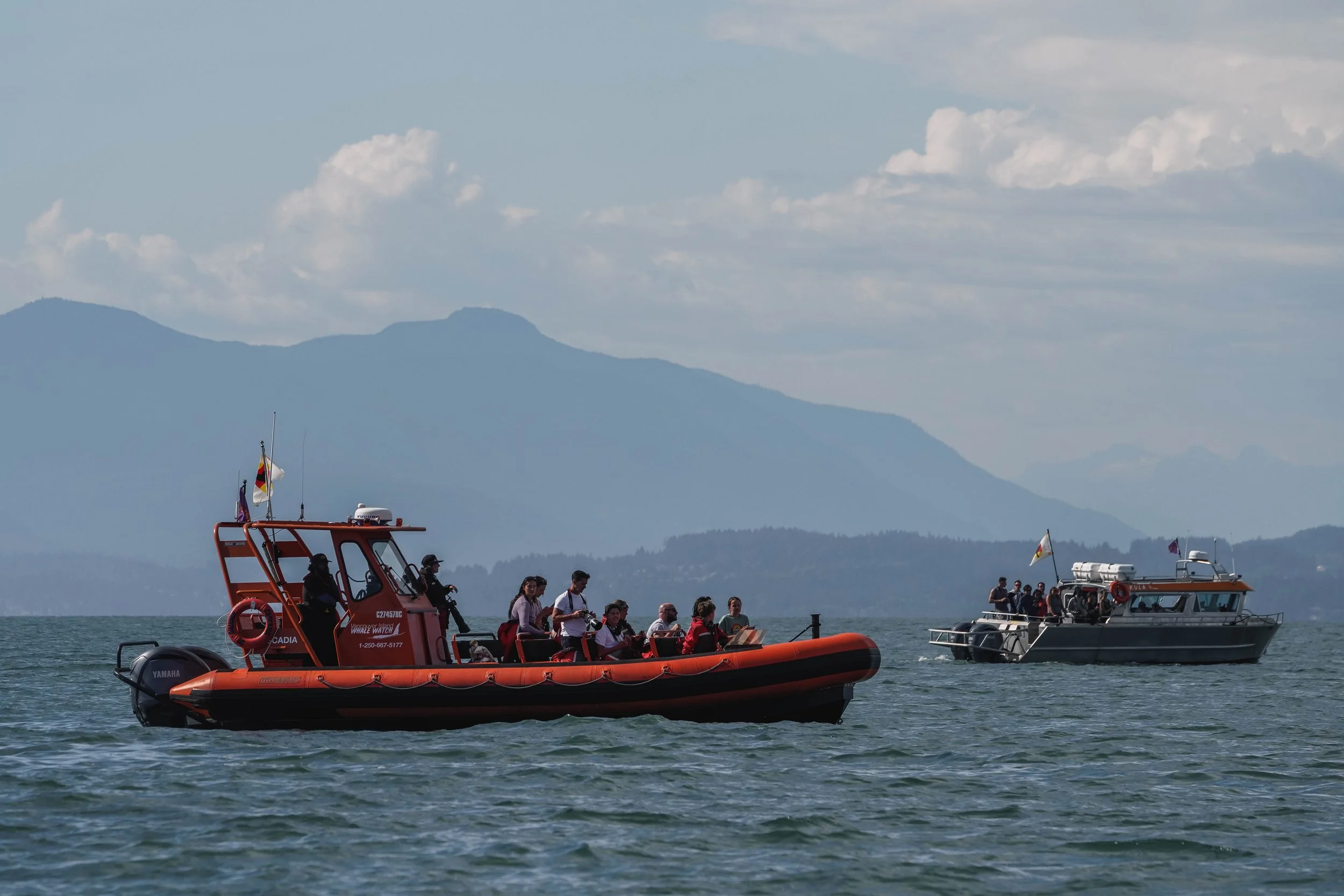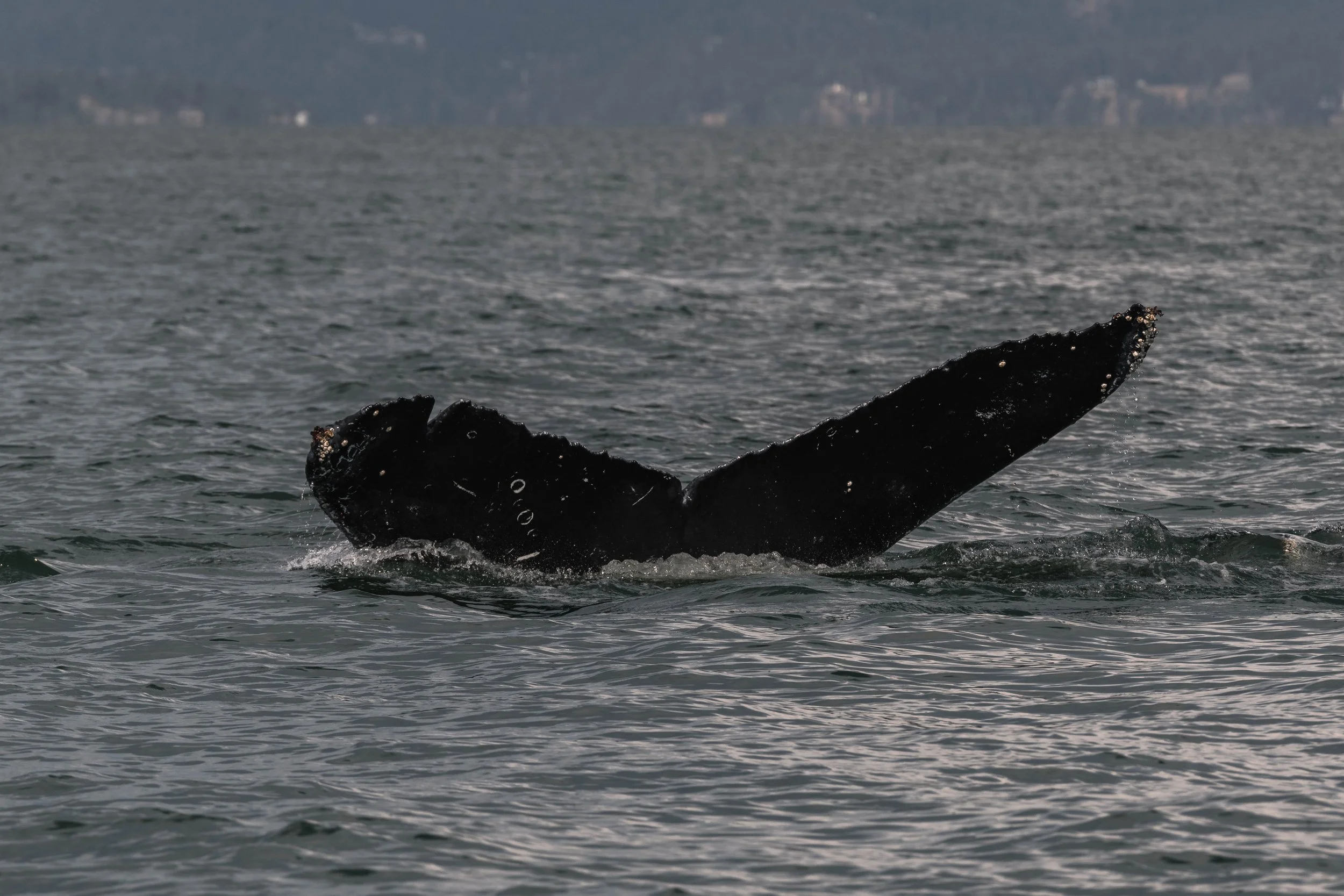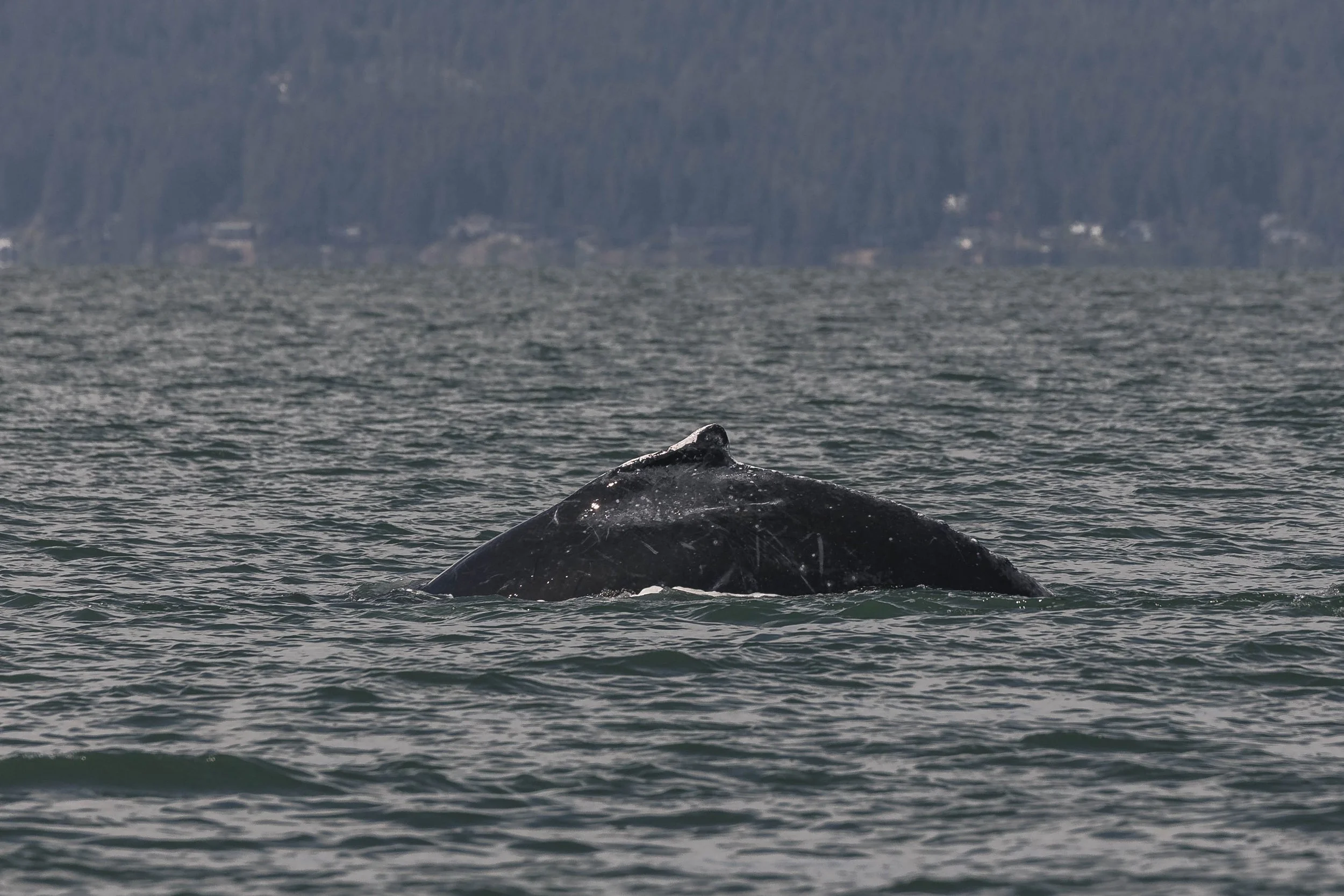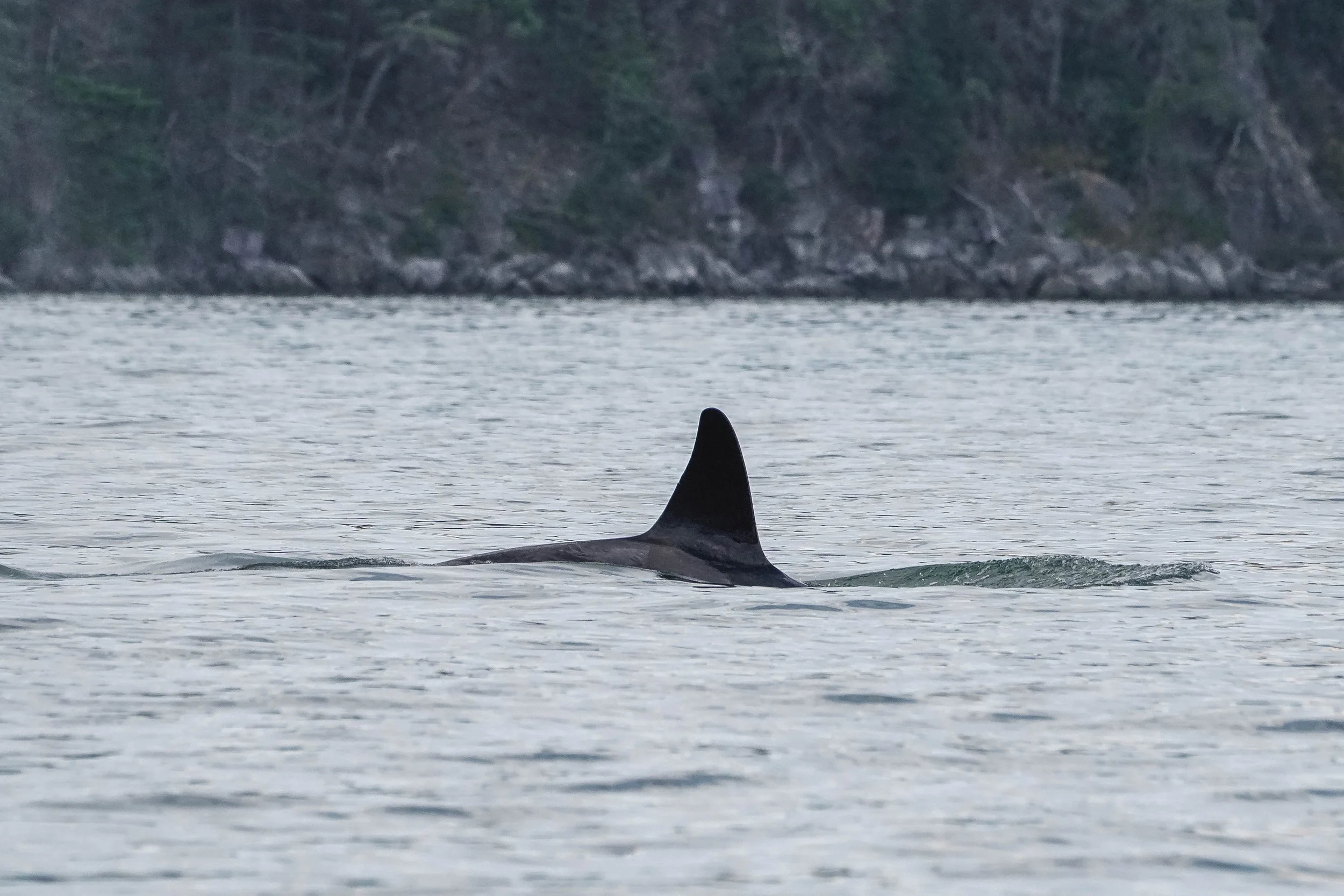July 21, 2025, 3:30 PM - Humpback babies and the T036As along the Sunshine Coast
This afternoon promised another beautiful day on the water, with the sun beaming down on us and not a wave in sight. We headed back into the Strait of Georgia, where we had seen quite a bit of wildlife in the morning. We tried our luck again and were rewarded quite quickly when we spotted the large, bushy blows of the humpback whales in the distance. We had our boats spot two different groups as well, one finding Split Fluke (BCX1068) with her 2025 calf and the other spotting Scuba (BCY1225) and Orion (BCX1251) travelling in the same area, but not quite together. All of these whales were doing feeding dives, dipping beneath the surface for a few minutes at a time before reappearing to catch their breath. During these dives, they will be chasing down their prey, mostly krill, but also some small schooling fish would likely be in the mix as well.
Each one of these humpbacks that we saw today would need to consume about a ton of food each day, with Split Fluke needing 1.5 tonnes since she is currently nursing her baby. Interestingly, pregnant females will also need this increased amount of food. They think this massive increase in caloric intake during both nursing and pregnancy is why humpbacks usually only bring back a calf every two years, to avoid having these increased energy needs stacking on each other. There are some exceptions to this, which we call “super moms”, but it’s pretty rare.
After the humpbacks, we continued across the Strait to where the T036As were found again for the afternoon.
T036A Leland ♀ (1990)
T036A1 Tierna ♀ (2005)
T036A1A (2022)
T036A2 Kailas ♀ (2012)
T036A3 Storm/Mike III ♂ (2015)
T036A5 ♂ (2021)
These whales were once again travelling together, which is the most common thing that we see from our orca. Although they do need to consume between 300 and 500 pounds of food each day, depending on their size, they can accomplish this in a few hunts throughout the day. The rest of their time is spent getting from point A to point B. Doing this, an orca may cover around 100 miles every day. This constant movement is partially due to the intelligence of their prey. Since they are mammal eaters, and most mammals are quite intelligent, they have to make some changes to their behaviour compared to some other ecotypes. Part of this is not spending too much time feeding on the same population of animals. If they keep feeding on the same group of animals, the intelligent animals won’t be as susceptible, and so the success of the orca would decrease. So they keep on the move, sometimes in large circles showing up within our range for a few days at a time, or sometimes covering even more ground, only being seen by us once as they pass through. It keeps things very exciting! It’s part of why we never really know what we might be seeing for the day, and what makes every tour unique and special.
They continued their travels and ended up in Howe Sound, where the group started to spread out. Pods of orca will often do this in this area to increase their coverage of the narrow passageways. The more you spread out, the more likely it is that someone in the group will find something along the way. One of these groups ended up being a bit playful with each other, doing some little rostrum lifts and being seen swimming on their side briefly before continuing more normal travel. It was wonderful to spend some time with them, but it was soon time to continue towards Nanaimo, so we left them to continue heading into the Sound.
The onboard Marine Naturalists, Val Watson, Aly Kohlman, and Desarae Poier, captured some great photos throughout the tour, which are available below!
Orion and Scuba
Orion going for a dive. Photo by Val Watson.
The top side of Scuba’s fluke. Photo by Val Watson.
A fluke waterfall from Orion. Photo by Val Watson.
Split Fluke and Calf
Split Fluke showing off her split fluke with her calf diving beside her. Photo by Val Watson.
Our two boats watching Split Fluke and calf. Photo by Val Watson.
The calf’s very scarred up dorsal fin. Photo by Val Watson.
Split Flukes calf surfacing. Photo by Aly Kohlman.
A look up the calf’s nostrils. Photo by Aly Kohlman.
Split Flukes tail as she dove. Photo by Aly Kohlman.
Split Fluke surfacing with her calf. Photo by Aly Kohlman.
Split Fluke’s calf’s dorsal fin. Photo by Desarae Poier.
Split Fluke and her calf surfacing together. Photo by Desarae Poier.
Split Fluke diving beside her calf. Photo by Desarae Poier.
The T036As
T036A3 Mike. Photo by Val Watson.
T036A3 Mike surfacing beside T036A5 Squall. Photo by Val Watson.
T036A3 Mike and T036A5 Squall. Photo by Val Watson.
T036A Leland surfacing beside her youngest, T036A5 Squall. Photo by Val Watson.
T036A3 Mike surfacing with T036A5 Squall. Photo by Aly Kohlman.
A little look at T036A3 Mike’s eye patch. Photo by Aly Kohlman.
T036A5 Squall surfacing beside T036A3 Mike. Photo by Aly Kohlman.
A little tail flick from T036A5 Squall while travelling with T036A3 Mike. Photo by Aly Kohlman.
Other Wildlife
Steller Sea Lions causing chaos on the Halibut Bank Buoy. Photo by Val Watson.
A great look at the sea lions on the Buoy. Photo by Val Watson.
A close up of a Steller Sea Lion on the buoy. Photo by Aly Kohlman.
A cuddle puddle of sea lions. Photo by Desarae Poier.
Harbour Seals hauled out on Snake Island. Photo by Desarae Poier.
A bald eagle in an arbutus tree. Photo by Desarae Poier.


